new posts in all blogs
Viewing: Blog Posts Tagged with: subplot, Most Recent at Top [Help]
Results 1 - 12 of 12
How to use this Page
You are viewing the most recent posts tagged with the words: subplot in the JacketFlap blog reader. What is a tag? Think of a tag as a keyword or category label. Tags can both help you find posts on JacketFlap.com as well as provide an easy way for you to "remember" and classify posts for later recall. Try adding a tag yourself by clicking "Add a tag" below a post's header. Scroll down through the list of Recent Posts in the left column and click on a post title that sounds interesting. You can view all posts from a specific blog by clicking the Blog name in the right column, or you can click a 'More Posts from this Blog' link in any individual post.
30 Days to a Stronger Novel Online Video Course
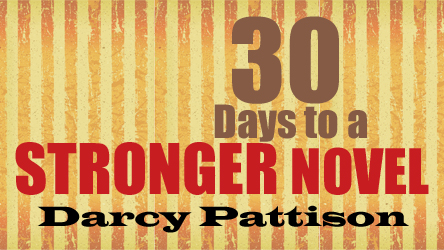
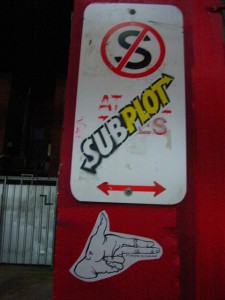 Subplots are a connected sequence of events, just like any other plot; the difference is that this is a minor plot with fewer developments. It should affect the main plot in some important way–or else you should delete it–but it doesn’t need the same development of a main plot.
Subplots are a connected sequence of events, just like any other plot; the difference is that this is a minor plot with fewer developments. It should affect the main plot in some important way–or else you should delete it–but it doesn’t need the same development of a main plot.
I am still plotting my trilogy, and I’m taking a different strategy this time. I am working on the plot line for the entire trilogy before I start writing. Each book focuses on a different aspect of the overall story problem, so in some respects, each book is a subplot. Yet, overall, the story needs a throughline, or a question that overshadows everything.
In my sff trilogy, the overriding question is will the Risonian planet blow up, killing all Risonians? Or, will they find a new home and refuge?
The subplots will focus on different characters in the story and how they answer different parts of the overall problem. There are three romance subplots, various political subplots, and a couple survival subplots. Characters are motivated by revenge, by a quest of power, or by a sense of desperation.
That’s all good! In a long story–such as a series or even just a trilogy–the story needs to have some depth and breadth, and subplots have the potential to help.
As I say in START YOUR NOVEL, it helps to look over 29 different plot templates and decide on the overall plot for your story. Clearly, my story is about survival, and I can echo that with other smaller stories or subplots of survival. I can also contrast with someone who is out for revenge and cares nothing for survival; revenge at all costs makes for desperate–and potentially compelling–drama. Romance plots: OK, these should be a given in most stories, even if it’s just a love story between a boy and his dog.
What Happens Next?
It often happens that I am trying to work out the main plot but get stumped. What happens next? I’ve no idea.
Then, it’s time to turn to the subplot that has been patiently awaiting notice. What happens next in the subplot? Part of getting stuck is the fear that if I make a major decision about the trajectory of the story, I’m stuck with it. If it’s wrong, it will mean a major revision. Subplots, though, are small and contain fewer scenes. Make a mistake there and it’s much easier to revise later. By focusing on a smaller problem, you put less at risk.
Sometimes I have to go down the list and answer the “What next?” question for each subplot before I get inspiration for a better setting, more compelling emotions, or a larger conflict.
Often, figuring out the next logical step for a minor plot shakes loose a detail that will make everything connect better. Oh! So, she’s the main character’ sister, and that’s why she wants revenge.
The new revelation sends me back to the main plot with a new twist on the action.
When I’m really stuck, I repeat this process with every subplot from action to romance. For example, a romance subplot implies that tension and conflict permeates the man-woman relationship. How does the betrayal, the attraction, the hate, the love, and the self-sacrifice relate to and affect the main plot?
Progress is slow on this huge plot. Thanks to subplots, though, it is progressing! What happens next? My story gets plotted!

My current WIP novel has a subplot of a chase, which is one of the 29 possible plot templates. Chase Plots are pretty straight forward. There’s a person chasing and a person being chased, the Chaser and the Victim. It’s an action plot, not a character plot (though always, character should be as strong as possible.)
The Chase plot has one major imperative: The Chaser must constantly catch sight of the Victim and the Victim always escapes by the narrowest margin. Otherwise, it’s boring. This subplot must tantalize the reader with the possibility of Chaser actually catching Victim.
My first draft of chapter one completely omitted the Chase subplot, so the first revision I did was to revisit the idea of a Chase Subplot. Yes, the story still needs it. Then, I had to decide how to add in the Chase subplot in an exciting way. What could I add that would give the Chaser a glimpse of her target? My twist on the Chase Plot is the Chaser doesn’t always recognize the Victim. So, I gave Chaser a smart phone app that identifies the Victim. Now, Chaser walks up to a table where Victim is sitting and the app starts to go off, but. . .Chaser is interrupted.

The Car Chase is a staple of Chase Plots. You can choose any form of chase, though, and still up the tension of your story.
Victim is almost caught and only escapes by chance. Because the story is in Victim’s point of view, this works because Victim realizes the danger he was in. Chaser is still clueless, of course, but that’s OK, because it’s not her POV.
Having a chance escape also works this initial time, because the scene introduces the rules of the Chase scene. But now, Victim KNOWS there’s a smart phone app and will have to use his ingenuity to stay out of range of that app. It will, of course, be easier said than done.
The whole scene has upped the stakes in the story as a whole. The other subplots are now free to carry on as needed, because at the right moments the Chase Subplot will be there to add to the story’s tension. Will Chaser actually CATCH Victim? Who know? Stay tuned!
What subplot(s) are you adding to you story to keep the tension high?

There’s an excitement in the air! I’ve started a new novel project.
Here’s what I don’t want to happen:
I don’t want the excitement for this project to get bogged down and dribble away. It happens too easily, as life issues take over, as problems arise with the project, or just as the work drags on.
I don’t want to talk bad about this project to anyone. Sometimes, I fall into the habit of complaining. This chapter or that character just aren’t cooperating! Why is this so hard? ARGH! I hate this project because it’s not going like I want. Nope. None of that this time. I love this project and I’m excited about it. I think my readers will love it, too. Hurrah! It’s such a joy to be working on such a great project.
I don’t want this project to drag on forever. I have scheduled two months to get a first draft done and I’m working hard on keeping to that schedule.
Here’s things I want to happen:
Joy. Excitement. Productivity.
Scheduling the Project
When faced with a big project, how do you break it down into manageable pieces?
I’ve already gone through the process of deciding what kind of novel this will be. Now, I just need to write it.
Here are the steps I plan to follow:
One page synopsis. I’ve written a one-page summary of the story, knowing full well that it would need to be fleshed out when the time comes. Now that the time is here, it’s easy to see where I want the story to go. There are huge gaps in the story, of course, but the one-page synopsis grounds the story in some particular issues.
Subplots to Detailed Plot.I am taking a day to flesh out some of the subplots. For example, one subplot will involve kids planning a parade. I spent today researching fun ideas to add to the parade and parade planning. Did you know that some parades these days require horses to wear diapers? It’s true. Horse poop on city streets–though once the norm–is now a no-no. There are special bags which are strapped to horses to catch their “meadow muffins.” (Now, see, isn’t that great language to use in a book? Meadow muffins. Horse apples.) Real life can be stranger than fiction: horse diapers.
I’ll take a day to research the other subplots and layout some ideas for developing the plot lines. Then, I’ll spend a day picking and choosing scenes to include and weaving them into the main plot line to create a detailed plot. That breaks the task of plotting into steps that I can manage. By approaching it from the subplot angle, I am free to make leaps and make errors: it doesn’t matter, it’s just a subplot. But in the end, I am sure that I’ll find some unique things to add to this story to make it more fun and funny.
WARNING: THIS 24-SECOND VIDEO SHOWS A HORSE POOPING. Your kids will probably love it!
If you can’t see this video, click here.
Characterization and character continuity. With a detailed plot in hand, I’ll double check the characterization needed. Because this is a second book in a series, much of the characterization is set up and I’ll need to continue it on, create an emotional arc for this book and make sure there is continuity. The first step will be the emotional arc for the character. I’ll need to make sure the external plot echoes the internal arc. This means a detailed summary of the story that includes the plot, subplots and character issues.
Revise. With a very long, detailed synopsis of the story, I’ll look for holes in logic, characterization and plot.
Write. Finally, I’ll use the synopsis to create a full draft–by Halloween.
This is a slightly different process for me, with more upfront planning. I’d like the full synopsis to be about 1/3 of the finished book, which will be enough detail to help me get the whole story done.

Somewhere in your writer’s head is a Master Plot, an idea of what a story or novel should be like, how it should progress. For writers who don’t outline–the write-by-the-seat-of-their-pants writers–the Master Plot is hard-wired into their brains.
For the rest of us, the idea of a Master Plot is helpful.
Hero’s Journey. The hero’s journey can be used for anything from Star Wars to the middle grade classic, Bridge to Terabithia.
Christopher Vogler’s explanation of the Hero’s Journey is excellent. The basic stages, along with the corresponding character arc are these:
- Ordinary World – Limited awareness of problem
- Call to Adventure – increased awareness
- Refusal of Call – reluctance to change
- Meeting the Mentor – overcoming reluctance
- Crossing the First Threshold – committing to change
- Tests, Allies, Enemies – experimenting with 1st change
- Approach to the Inmost Cave- preparing for big change
- Supreme Ordeal – attempting big change
- Reward – consequences of the attempt
- The Road Back – rededication to change
- Resurrection – final attempt at big change
- Return with Elixir – final mastery of the problem
You write comedy or humor and want a plot for a novel?
John Vorhaus, in The Comic Toolbox adapts the hero’s journey into a Comic Throughline.
Similar to the Hero’s Journey is Peter Dunne’s adaptation to a story in which two main characters influence each other, or one character drastically changes a second. The Emotional Structure details how the characters interact. This could be a sort of Rivalry story, a Love story, a Forbidden Love story, or even one of Pursuit, Rescue, or Escape. The main thing here is that two characters act upon each other. Dunne suggests that Acts 1 and 3 are about the outer plot, while Act 2 is the inner journey.
There are other “master plot” ideas, but in discussing the idea of master plots, I like one strategy that Jack M Bickham discusses in his book, SCENE AND STRUCTURE. His “scenic master plot” includes a three-chapter self-contained subplot in the middle of the story, something exciting like a chase scene.
“Chapter Seven. Hero viewpoint. He is embroiled in his three-chapter quest. . . an action sequence, preferably physical: a car chase, a face-to-face confrontation with violent words and emotions, perhaps even an attack on the hero’s life. . .The end of the chapter is at a new disaster which will allow no time for sequel [evaluating what just happened], or at some turning point in the middle of the ongoing scene. This chapter hooks instantly into the next.”
I’ve always thought this was brilliant. Right when the novel is in danger of lapsing into a sagging middle, you insert a subplot of action that resolves over three chapters, while keeping the reader engaged. Of course, it must feed back into the main story after those three chapters and be integral to the story. But it solves so many pacing problems.
Do you have a sort of “Master Plot” that you write by?

Where would you insert a 3-chapter, self-contained subplot that is mostly an action sequence?

I recently did a revision of a short novel manuscript, based on editorial Notes. The Notes were not specific, rather quite general. You see stories of 15-page editorial letters, but this was the total opposite. Basically, the story seemed out of focus and the interest lagged at a couple points.
Refocus the Story

Wow. What a vague comment. But immediately I knew what the problem was.
My story has a main plot — Parties– and two subplots, Bugs and Music. In the original draft. Chapter one focused on Parties/Bugs, but chapter two went to Music/Bugs.
What is the main plot? Parties.
But when chapter two went to Music/Bugs, it threw the main plot out of focus. Instead, I moved the Music/Bugs to chapter three and pulled a later Parties chapter up to the chapter two position. Of course, that meant smoothing out transitions and timelines, something easy to do; it was also easy to get wrong, because it was tiny things that indicated the timelines. “Later that day. . .” “. . .from yesterday.” I am very bad at finding all of these small edits and am relying on some critiques to make sure I didn’t miss something.
Besides the position of the subplots, I also realized that one subplot had too many scenes. In the short novel that I’m working on, I didn’t have much room for each subplot, so when Bugs got four pretty major scenes, it threw off the focus again. After evaluating the four scenes, I realized that one was slightly repetitious and I could cut it without affecting the overall story. That strengthened the Bug climax because the two lead-up scenes were enough and it left this remaining scene more fresh and fun.
Finally the Notes suggested that the climax of the main Parties plot was too short. Duh. It was only half a chapter. In the revision, it begins in the next-to-last chapter, and continues through most of the last chapter. Making the climax of the main plot longer, gives it more weight.
Overall, here’s what I did:
- Cut a Bugs scene.
- Rearranged the order of Parties plot, Bugs subplot, and Music subplot.
- Strengthened the Parties main plot by enlarging the final Party scene.
- Created more tension throughout by tweaking the emotional impacts of events.
All of that because the Notes said the story was out of focus and the final Party scene needed to be longer. It’s what we do: we revise.

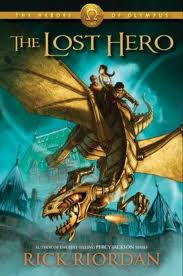 I’ve been reading through the first book in Rick Riordian’s new series, The Lost Hero. He has a nice breezy style that is full of adventure. And I’ve especially been noticing the subplots. There is an overarching plot of overthrowing evil and setting the universe to rights again. But each character has a specific role in that plot and his/her own subplot. Jason, Piper and Leo must each struggle with their parental god and what that heritage means. Each must overcome weaknesses and obstacles.
I’ve been reading through the first book in Rick Riordian’s new series, The Lost Hero. He has a nice breezy style that is full of adventure. And I’ve especially been noticing the subplots. There is an overarching plot of overthrowing evil and setting the universe to rights again. But each character has a specific role in that plot and his/her own subplot. Jason, Piper and Leo must each struggle with their parental god and what that heritage means. Each must overcome weaknesses and obstacles.
In other words, built into the basic structure of these stories is a rich set of characters, each with his/her own subplot.
Plan for subplots in your novel
Before you write your next story, ask yourself if your cast of characters are richly and deeply drawn. Does each have a subplot that will feed into the main plot? For my WIP, I realized that the main character was rich and deep, but the supporting characters were vague, aimless. I am working now to enrich them before I start writing.
One main question is how will the secondary characters feed into the main plot. The subplot must be tangent to the main plot in some way, deal with similar issues or sub-issues or something that adds to the main plot. It can be a surprise, or an enrichment, or a contrast. But the relationship can’t be random.
I am also thinking about settings and wondering if some settings from one subplot can be reused in another subplot or the main plot. Props can also be reused. In other words, what can I use to tie the plot and subplot together in richer, deeper ways?
Writing a subplot in your novel
Subplots, by definition, are sub. They don’t take up as much space as the main plot; the emotional resonance isn’t as great as the main plot. Some subplots I’ve dealt with seem to take over a story. The challenge is to get the balance right, so the reader is never surprised at what happens. I’m monitoring the emotional impact of subplot scenes v. main plot scenes. How much space does each take up? What’s at stake in each? The main thing is to keep the main thing the main thing; but at the same time, keep the sub thing a rich little thing that enriches the main thing.
Revising a subplot in your novel
Generally, I need to enrich subplots, my first drafts are thin. Again, I am looking for ways to interconnect subplots and the main plot, ways to reuse bits of dialogue, settings, props or otherwise mirror events. It’s a time to stand back and evaluate the subplot for what it adds to the story (or what it could add with revision) and make sure it is pulling it’s weight.
Subplots enrich and deepen stories. My job this week is to work on my secondary characters and give them substantial subplots.

There are two types of first-drafters for novels: those who write too short and must expand and those who write too much and must cut. Today, we’ll talk to those who need to cut when they revise their story.
One complaint for drafts that are too long is that they have too many plots. The first draft is to help you figure out your story; the next drafts are to figure out how to tell that story in the most dramatic way. That’s good theory, but let’s make it more practical. Where do you cut? What criteria do you use?
Who hurts the most? The most dramatic stories will be the most emotional stories. One criteria for revising is to ask, “Who hurts the most?” Where in the story do you find the most emotion, where is the most at stake?
Drama means that something is at stake: the survival of the species, survival of a town or community, survival of a teen in the midst of teasing or bullying, survival of a closely held dream. As you look over your plot and subplot, one goal of revision is to cut subplots with nothing at stake, while raising the stakes in everything you have left.

Who hurts the most in your story?
For example, if a teen is worried about surviving a bout of teasing, raise the stakes by putting a love interest close by to watch. Now, the teen is risking both safety, pride and the love-of-her-life.
Does something actually happen in this subplot? Let’s say that you take out subplot A. Does the story change? Is this subplot integral to the story, so important that omitting it will change the whole tenor of the story or novel. Some subplots are just fun detours: omit them. Some subplots add flavor or setting or deepens a character; and yet, nothing really happens. If you take bits and pieces of the subplot and slot them into the remaining subplots, you won’t miss the subplot at all. Do the actions of this subplot really advance the story or not? Is this subplot crucial to the story or not? IF not, be ruthless and cut.
Add a subplot. What? I have a story that is too long, but you say to add a subplot. Not exactly. Maybe, though, you can take the extra bits and pieces and restructure them to create a subplot. Instead of disconnected bits, can you build a narrative arc–a subplot–from them? (And while you’re at it, make it all shorter!) Remember that a subplot, by definition, doesn’t have as many plot points as the main plot. So, pick and choose only the strongest scenes to create this new subplot. While you’re at it, try to interweave the subplots and plots to make a more coherent whole. Have the climax of the subplot become a plot-point in the main plot. Failure to defeat the bully means that the teen winds up in the hospital, which means she can’t attend the prom.
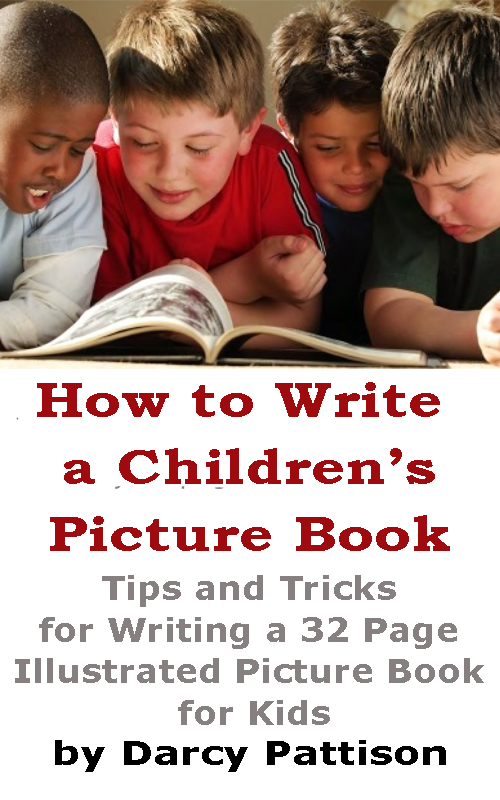 |
-
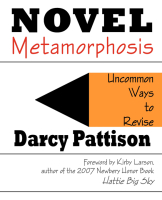
It’s confirmed: I am not a character writer, able to start with a character and “see where the character takes me.” Nope. I need to plot first.
Now here’s the thing. I can tell you about 29 different plot paradigms. There’s the hero’s quest, especially as it plays out in Bridge to Terabithia. But it seems that we must constantly relearn everything for each new novel and what worked on the last one may or may not work on this one.
I know the overall structure of this story but was having problems with the plot. This time, a simple 8-step structure has helped.

-
Story Goal: What is the main problem in my story?
-
Consequence: So what? If the main character fails, then what?
-
Requirements: In order for the goal to be achieved, what must happen first?
-
- Pre-requisites: In order for those requirements to happen, what must happen first?
- Forewarnings. Directly opposing the Requirements, what could go wrong to indicate that the Goal will never be achieved?
-
- Preconditions. In order for the Forewarnings to happen, what must happen first?
- Costs. What price does the main character pay for success? What must s/he sacrifice to achieve the Goal?
- Dividends. And the opposite of the Costs, is the unexpected wonderful things that might result of the struggle to gain the goal?
What these questions gave me is a way to start adding events to the story in a somewhat structured way. I also repeated the questions for each of three subplots, knowing that I could skip one or two of the questions for any given subplot because they don’t have to be as well developed as the main plot. What I’m doing now is working through a synopsis that weaves these plot lines together. At this point, I feel free to change, edit, restructure, omit, embellish as needed. I’m hoping for a 5-10 page synopsis of the story from which I can start to develop a scene list.
Some things I’m considering as I work on this synopsis:
- Raise the stakes. Are the stakes of the story constantly evolving?
- Concrete events. Are there concrete events that could develop into strong scenes?
- Balance of plot/subplot: Is a subplot overwhelming the main story? Am I maintaining a strong through-line for the main plot?
- Setting. Am I selecting the most effective setting for each scene? In fact, have I chosen the right overall setting, time period, etc?
- Characters. Do I really need all those supporting characters? Can I combine functions and get rid of some?
How I WISH I could do all this intu

Weaving Plot and Subplot Together
 I am working on my new novel’s plot and subplot. The subplot is a secondary goal, in this case a love story: Boy meets Girl, Boy and Girl hate each other, Boy and Girl love each other. I am working on my new novel’s plot and subplot. The subplot is a secondary goal, in this case a love story: Boy meets Girl, Boy and Girl hate each other, Boy and Girl love each other.
I’ve written a short synopsis of each plot and am working at this early stage to interweave them, to find common ground for development and ways to enmesh them deeply.
- Setting. Where can the setting overlap and both stories can intersect?
- Dialogue. Where can a phrase or saying carry over from one plot to the next? What topics or themes of conversation, or what ways of speaking can cross the plot lines?
- Plot Events. Where can one plot line interact with the other? Where can events of the main plot impact the sub-plot events and vice versa?
- Escalation. How can I play the plots off each other to raise the stakes in each?
- Characters. Can a couple characters cross the plot lines, becoming crucial in each?
Now, my only question is, do I need a couple more subplots with a similar meshing?


By: Darcy Pattison,
on 11/23/2010
Blog: Darcy Pattison's Revision Notes
( Login to Add to MyJacketFlap)
JacketFlap tags:
final scene, book, fiction, novel, romance, subplot, scene, write, how to, novel revision, denouement, Add a tag
How to End a Story Well
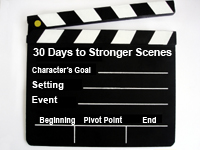 Join us on Facebook for a discussion of scenes. Join us on Facebook for a discussion of scenes.

There’s a last special scene to consider and that’s the last scene in your book. This may or may not coincide with the climax of the story; traditionally there’s a denouement, a French word that originally meant an untying or to unite. It’s the place where all the plot threads are brought together for a last time.
Subplots and Denouement
Romance Subplot. In terms of plots and subplots, traditionally all subplots are resolved before or during the climax scene except the love subplot. The love story is often reserved for a tender moment at the end of the story. In the movie, The Princess Bride, it’s the five perfect kisses in the history of the world moment and this is one of them. And the kid who has listened to the whole story. doesn’t even mind this emotion because of all the action/adventure he’s endured.
More about denouements
- Short. The denouement is usually short, with just a couple pages, or perhaps a short chapter after the climax. I often see pages and pages after the climax scene and usually advise that these be cut or placed earlier. Please, solve all subplots before the climax, except the romance.
Yes, in detective stories, there’s often the long explanation, a la Hercules Poirot from Agatha Christie’s books. But these type scenes don’t play well for today’s fast-paced audience. Wrap it up fast.
- Mirrors the Opening. One option is to mirror the opening scene. For example, in Dicken’s The Christmas Carol, Scrooge is challenged in the beginning with how he treats the poor, his employee and his nephew. The ending mirrors these three challenges as he gives to the poor, takes care of Tiny Tim and his family and visits his nephew’s Christmas party.
Mirror openings are a way to demonstrate the character change in concrete ways and is often part of a good quest story. But even here, be careful and don’t drag it out.
- A Year Later. Another option of the denouement is to take us a year ahead (or whatever time period is logical) to see the results of the story. It’s a great option for some stories, just keep it short.
- Hint at Sequel. Of course, you want to hint at a sequel. You want a series and sales! But do it here with a light touch, a bit of mystery, not leaving the reader totally hanging. UNLESS–you know up front that this is a series/trilogy/multi-part story. Then, try to wrap up something and just hint at what comes next. And do it quickly.
- Short. Did I say keep it short? Well, keep it short. Really. Cover loose ends, but make it snappy.


By: Darcy Pattison,
on 1/26/2010
Blog: Darcy Pattison's Revision Notes
( Login to Add to MyJacketFlap)
JacketFlap tags:
events, book, novel, plot, scenes, subplot, how to write, template, layer, Add a tag
OK, you’ve narrowed down your story to a plot template and you know what characters, events, settings are implied by the story you are thinking about and the plot template. You know some of the pitfalls of plots. Now what?
It think this is the hardest part of plotting a novel, going from generalities to particulars, actually choosing and writing scenes. But you have to make a start, so let’s get to it.
Working Methods
Plan or write. Plan first or write and see where it goes? Oh, the perennial question! I’ll dodge it, though, by saying you must follow your own bent. Find your own working methods and habits of working that produce pages that lead to a full draft of a novel.
However! IF you usually just start in writing, TRY planning each scene. IF you usually plan each scene, TRY just jumping into the writing. Every once in a while, it’s great to break your pattern of working and see what happens. Shake yourself up! (I suggested this once at a national conference and got several notes later that this was the best advice the writers had ever taken, the resulting novel was the best she had written – so try it!) If the results are disappointing, you can always go back to your original methods of writing your novel.
It just depends. But I just avoided the question again of what to write first, second, third, etc. And here’s where the answers get frustrating: it just depends. Not knowing your genre, audience, voice, characters, setting, plot template – I simply can’t say. But I can give general guidelines.
Try to write in scenes. A scene is a unit of story that is self-contained, in that it has a beginning, middle and end; it has a goal and a resolution (either tragedy or success); it plays a role in the story. Writing in scenes adds tension to a story and keeps the writing focused. (MUST you write in scenes? No. Yes. It depends. If you’ve never done it, try it!) This is easy advice to ignore; I did it for many years and my writing suffered. More on the anatomy of scenes tomorrow.
Working Attitudes
 Don’t be boring! Try to build in surprises. Bored readers won’t finish your story. Don’t be boring! Try to build in surprises. Bored readers won’t finish your story.
- Scene cuts. With each new scene or chapter, stop and think about what is expected next. Don’t do it. Instead, jump ahead a bit more than expected.
- Leap-frog story lines. Or leave a character in the middle of a crisis and leap frog to another character where you get us involved emotionally, before leap-frogging back to the first story line.
- Ground your novel in physical, sensory details. In the scene’s opening, set the scene, especially the emotional tone. Do this by careful selection of sensory details and the specific words you use to describe what is happening.
- Focus on emotions. Always remember to make us care about a character before springing danger.
Don’t be cliched! Brainstorm like crazy. Before you start a scene/chapter, list ten possible events and sequence of events. Yes. Ten. Not nine. Not eight. Ten. Force yourself to go beyond the cliche that you thought of first and go on to something different, more striking and more original.
Plot Complications and SubPlots
Depending on what source you consult, you may hear a couple terms used concerning subplots and plot layers, or extra complications for the main character. These work for me.
- Plot layer. A secondary problem given to the s

By: Martha Alderson, M.A.,
on 10/17/2007
Blog: Plot Whisperer for Writers and Readers
( Login to Add to MyJacketFlap)
JacketFlap tags:
Dramatic Action, PLot Planner, subplot, Character emotional devleopment, Plot, Dramatic Action, PLot Planner, Character emotional devleopment, subplot, Add a tag
The following are questions Livvy had after my responses in the 10/11 post below.
Q: I did have a question on your Folly example (note: Folly is a mystery by Laurie R. King). You said to use one color to write “arrival” to note Dramatic Action above the line? Then you said to use another color to write “fragile” to note the Character Emotional Development below the line? So am I supposed to plot two points for the same scene? I thought it was either or. Or are you saying for the initial CED, to just note it underneath “arrival” above the line in a separate color just to distinguish it from each other as the beginning emotion? So then for future CED tracking, do I keep it below the line?
A: Yes, to your first question. Both the Dramatic Action (DA) notation and the Character Emotional Development (CED) notations go above the line with different colors to distinquish from each other. Why above the line? Because in the arrival scene we know that the Character is not in control due to her emotional state and the reality of what she has undertaken. Therefore, there is conflict, tension and suspense in the scene and so, belongs above the line.
No is my answer for your second question. The only CED notations that go below the line are the ones where the protagonist is in control. For instance, when she throw away all her medication, we know that in that moment she is in control. This dramatic action is a major symbol of how she is trying to become even more in control of her life.
Q: Are the CEDs that are plotted below the line supposed to show just the progression of the protagonist’s internal flaw or is there a way to show a relationship subplot as well?
The way I look at it, I view the Dramatic Action as the “A” story (or Plot) which is the problem in the outer world that needs to be solved. I am thinking that CED would be the “B” story (or subplot) which is the internal conflict or fatal flaw, which reveals what the protagonist needs to achieve internally in order to help resolve the external goal of the plot. So basically, Plot is dependent upon the Fatal Flaw or “B” story for resolution. But then you need a “relationship” subplot or “C” story to validate whether or not that internal change has occurred in relation to something in the outer world.
A: If how you "look at it" best serves your writing, I recommend that you proceed that way. Personally, I find that the different plot threads can't always be separated in this way, in that they are too interdependent on each other. For example: sometime after she has thrown her pills into the water, she becomes paranoid of sounds she hears. Feeling compeltley empty, she wades into the water. We, the reader, find this alarming attempt at squelching her paranoia, putting an end to her suffering, an act of trying to commit suicide. Yes, what triggered the paranoia is external, but also internal, too.
Folly is definitely Character-driven, but is also a mystery ~~ who attacked her at home and is out to get her? A subplot also turns the story into a murder mystery when she attempts to find out who murdered her great uncle.
In the end, when she shows in the Climax behavior that she could never have demostrated at the beginning or even middle of the story due to all that came before, we know that she has been tranformed at depth by the dramatic action throughout the story.
Q: Can some of the scenes / summaries that are plotted Below the line in the plot planner show Thematic significance? Or does Theme details only correlate with scenes above the line?
A: Thematic details, if you're deliberate about including them, happen in scenes both above and below the line. They are not dependent on tension, conflict and suspense.
|
|

 Subplots are a connected sequence of events, just like any other plot; the difference is that this is a minor plot with fewer developments. It should affect the main plot in some important way–or else you should delete it–but it doesn’t need the same development of a main plot.
Subplots are a connected sequence of events, just like any other plot; the difference is that this is a minor plot with fewer developments. It should affect the main plot in some important way–or else you should delete it–but it doesn’t need the same development of a main plot. 





















 Don’t be boring! Try to build in surprises. Bored readers won’t finish your story.
Don’t be boring! Try to build in surprises. Bored readers won’t finish your story.
I wanted to give a word of caution for writers reading the past couple of posts:
PP and ST can be addicting. Don't get so carried away with plotting that you find yourself organizing instead of writing...
Great good luck with your writing...
So basically it’s the scene(s) in the climax section that we have to watch out for in terms of the final CED, to see if the character has evolved from the initial fatal flaw in the beginning of the story? And what you are saying is that it is suffice by just marking it in a different color to denote the arc or character journey in emotional development? Subplots, therefore don’t need to be marked separately in Plot Planner because it is intertwined within the Dramatic Action?
On the last question, so summaries don’t show thematic details? (Anyways, how would we know to mark the summaries for Theme in plot planner if we don’t even track that info in scene tracker). Is my understanding then to just mark those scenes (not summaries) whether above or below the line, that have thematic details, correct?
I apologize if I seem to be reiterating my questions, I just want to make sure I am interpreting your response correctly. I know you are extremely busy and I really do appreciate all of your help.
ps. You're right, PP and ST is addicting. And I have resumed back to my writing with more confidence! By the way, I ordered your DVD with the focus on CHildren Writers and eagerly await to be enlightened by your method again. Perhaps by watching you explain your method, I'll get a greater sense on everything you have written in your book.
Was also wondering, are all of your DVD workshops pretty similiar and touch on everything that is on the book or do you delve into any advance topics on plotting for example with the DVD you have that uses Memoir of a Geisha?
Thanks in advance Martha for everything and for your continued support!!!
Please see the 10-29 post for the answers to the above questions.